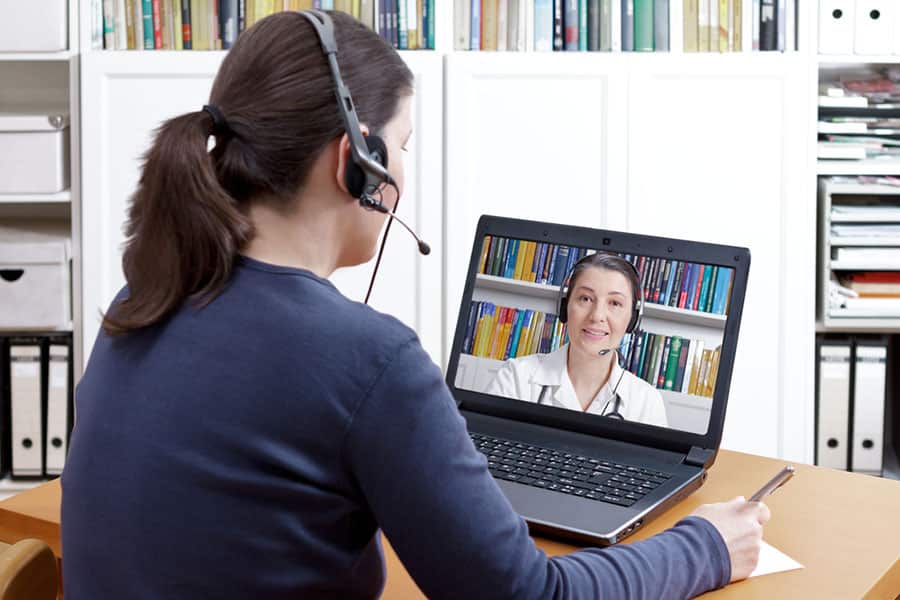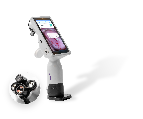It seems that everything is available online these days, even healthcare. An increasing number of women are turning to digital healthcare solutions to augment or selectively replace their brick and mortar women’s health providers. But what factors are motivating patients to use these services, particularly to address women’s health needs?

Patients as consumers
Many so-called ‘Femtech’ apps and devices promise to give female patients a chance to take a more active role in their own healthcare. This can be seen as part of a shift towards patients seeing themselves as healthcare consumers or purchasers of healthcare.
There has been debate surrounding this shift with some advocating that treating patients as consumers increases the quality of healthcare. Others would suggest that healthcare is too specialist an area for market forces and patients’ preferences to play a role over the advice of experienced clinicians.
Whichever side is right, patients are increasingly turning to healthcare tools that give them a sense of choice within their healthcare experience.
Data to share rather than relying on memory
Clinicians might bemoan the patients who arrive armed with internet research into their symptoms but for patients, a sense of understanding about their symptoms can be reassuring. More clinically useful than hours spent reading WebMD, are symptom tracking systems. These apps can provide important data that can be used to gain a broad understanding of patients’ experience.
Especially in the area of reproductive health, apps that track menstrual cycles can be particularly relevant to offer an accurate picture with recorded data, as opposed to relying on a patient’s subjective memory. These have proven so popular with patients that Fitbit included a female health tracking feature in a recent upgrade.
![]()
Increased accessibility
With more than half of US counties lacking a practicing OBGYN, access to care is a significant issue. While some healthcare services are employing telehealth solutions within mobile health centers to bring in-person care to those in need, some women are taking matters into their own hands and turning to online services.
Patients can now turn to online clinicians to answer many of their OBGYN needs. The Maven Clinic offers a range of clinicians available for virtual consultation for a variety of issues. Patients are able to book a video-chat consultation and have prescriptions sent to their local pharmacy. This allows a patient to access a level of gynecologic care that might not be available in their area. As the service is available on a ‘pay-as-you-go’ basis, the cost to patients can be lower than some insurance copays, opening the door to those who might lack insurance.
Affordability
Affordability remains an issue in every area of healthcare. Many find that telehealth is not only convenient, but it also provides affordable access to care and medication. This is great news for the one in ten adults who have reported they either delay or go without medical care due to cost.
Even for those women who might find access to an OBGYN to be a luxury, the ability to receive affordable contraception is a necessity. However, even with publicly funded contraception available, many previously lacked the ability to receive it.
Digital healthcare options have helped fill this so-called contraceptive desert. The term “contraceptive desert” has surfaced in recent years, putting a label on the areas in the United States where there is less than one clinic for every 1,000 women eligible for publicly funded contraception.
The ForHers online platform is bridging this accessibility gap by delivering birth control to a patient’s doorstep at a low, flat-rate monthly, often including guidance from a licensed physician at no additional cost, regardless of whether the patient has insurance or not. When it comes to insurance, many carriers are beginning to recognize and cover telehealth operations, decreasing the cost of what is considered to be already competitive pricing.

The digitalization of brick and mortar clinics
Brick and mortar clinics and healthcare systems are responding to the clear preference that many patients are showing for digital healthcare solutions. There are an increasing number of initiatives that may resolve some of the disparity between those who advocate wide-scale adoption of digital healthcare tools for patients, and those wary of putting too much power in the hands of patients.
The move to digitize some areas of patient experience is not only within exclusively digital services. Throughout many healthcare systems, patients portals and digital communications are helping keep patients engaged in their healthcare process. Some providers are offering SMS reminders for routine screenings and even digital satisfaction questionnaires after appointments. Some are even now offering ‘virtual visits’ for patients with non-urgent gynecologic issues.
With increased channels of communication, patients are better informed than ever before. Online patient portals allow for regular communication outside of the exam room, which keeps patients more regimented, accountable, and engage in their overall health.
Read more:








